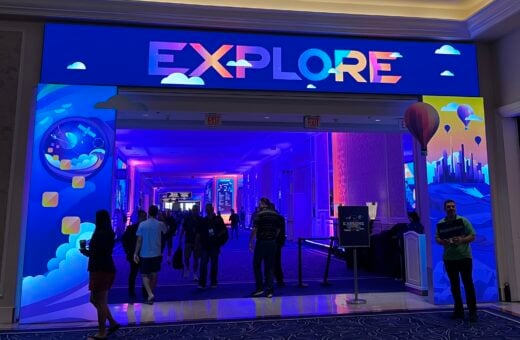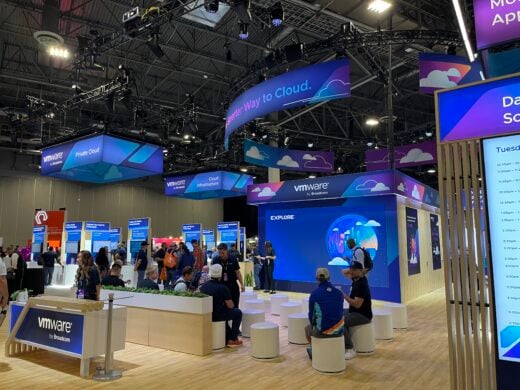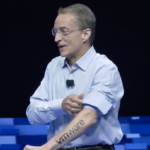It’s been almost a year since Broadcom acquired VMware, and this year’s VMware Explore in Las Vegas (August 26-29, 2024) was my first event hosted by the company after the change in ownership.
There was palpable ecosystem turbulence at the conference. I want to look at this turbulence from a few angles: how VMware is now choosing to define itself (both in terms of product and brand), how VMware is choosing to partner, and how competitors are positioning themselves.
VMware Strategy Now and Then
Under former CEO Pat Gelsinger, VMware’s strategy was M&A-centric in an effort to expand the company’s offerings beyond its historic on-prem, virtual machine-centric scope.
Pat Gelsinger went on an absolute M&A tear at the end of his tenure as CEO of VMware before leaving to lead Intel in 2021, acquiring 24 companies from 2017-2020.
– By the Numbers: VMware – Broadcom Edition
In an era where cloud migrations and Kubernetes adoption threatened to upend VMware’s business model, Gelsinger made defensive acquisitions and partnerships in an attempt to bolster the company’s portfolio against the market’s moves. He made purchases to try to move the company up the stack beyond infrastructure, with investments across app platforms, containers and container orchestration, observability, app packaging, and security, among others. He also started partnering with hyperscalers to give VMware more of a cloud story.
Broadcom CEO Hock Tan appears more singularly focused in his vision for VMware’s future, and it is not clear that he views all the technologies that came into the VMware fold under Gelsinger as an essential part of that future. While Gelsinger targeted adjacent growth technology areas, Tan appears focused on prioritizing and monetizing the offerings that are already highly valued and in use by the company’s customers.
Tan’s stated primary focus is simplicity. Some examples of what this quest for simplicity means in the portfolio include:
Portfolio consolidation
Tan’s keynote stated he took the company from 8,000 to 4 SKUs. (It turns out there’s a bit more nuance in that number 4, but directionally it tells you the story you need to know.) Cynics will call this “forced bundling,” though some customers (particularly customers that have had difficult license entitlement conversations with VMware in the past) will appreciate the simplified process.
Portfolio rationalization
Products that don’t align with VMware’s revised strategy are being repackaged. For example, portions of the product that offered cross-cloud analytics and monitoring were moved out of VMware and into CA / Symantec to avoid offering overlapping observability solutions across the Broadcom portfolio, and CloudHealth (which provides cross-cloud cost visibility) is now being exclusively sold by third-party provider Arrow Electronics.
Product focus
Based on the volume of users and revenue, the core infrastructure product (VMware Cloud Foundation, or VCF) clearly captures more of Tan’s attention than the app platform (Tanzu.) And while there is definitely product investment happening in new and emerging areas, as seen from the VMware Private AI Foundation announcements, in both the keynote and the analyst session Tan made comments about not chasing “bright shiny objects.”
The context around these comments – particularly from the analyst session – indicate Tan’s statements could reasonably be interpreted as pointed commentary about Kubernetes. The Tanzu platform has two available runtimes: Cloud Foundry and Kubernetes. More airtime was given to Cloud Foundry than Kubernetes, and the leadership team made statements about ‘focusing on existing customer success.’ All together, there were signals that read as the company renewing its focus on the assets from the Pivotal acquisition over the Heptio acquisition, and prioritizing solutions centered around its VM-centric past more broadly.
Pricing
No VMware strategy discussion in 2024 would be complete without discussing the renewal price increases that have captured industry attention. Part of this is driven by a change in bundling: if a customer previously bought only vSphere licenses and now their only choice is to buy VCF licenses, that’s going to be an increase in cost with a perhaps uncertain value for the customer in question. One of VMware’s primary criteria for success will be whether they can avoid selling shelfware and actually get customers to use the full bundle of products that they now must purchase.
Packaging, however, was not the focus when pricing conversations arose. When asked about these price increases, executives’ framing took one of two forms:
- Redirecting to talk about the expense of cloud. From the keynote stage, Tan directly attacked the expense of public clouds, saying that public cloud users have “PTSD” from the costs, complexity, and compliance issues of public cloud.
-
Noting that VMware is also in the middle of a transition from perpetual licenses to subscription licenses. (Which again has significant P&L/balance sheet impacts for their existing clients, especially when renewals are several multiples of what clients had seen previously.)
Tan has made it clear that he is willing to churn low-value customers in service of the most strategically important accounts.
These product and pricing moves will not be for everyone, and Tan is okay with that.
Partners
I have never in my career been to a session called “Partner Panel” that didn’t include anyone on stage that is external to the company. (This happened at an analyst session, which while not NDA is also not publicly accessible for viewing.) That was an unforced error by VMware, especially after the drastic culling of their partner ecosystem earlier this year. (This wasn’t a presenter problem, to be clear: they uniformly did a solid job explaining VMware’s approaches to partnership across various channels / products and it was legitimately helpful. But to call something a “partner panel” and only have internal people on the stage was a miss.)
Tech is an industry built on co-opetition, which means that so many partnerships in the industry are much more fragile than we realize. Many partnering companies compete in, say, 80% of the market and have overlapping common interests in the other 20%. We forget to our detriment that it’s often the bonds of individual people that are holding together those shared interests.
I talked to several VMware partners on the Expo Floor who expressed both the difficulty of navigating the changes in the partner program, as well as the challenges of navigating the layoffs and employee turnover within VMware post-acquisition.
As in my previous post Maybe the Real Tech Debt was the Friends we Made Along the Way: we forget that platforms are sociotechnical systems at our peril. Partnerships are not just contracts. They are interpersonal relationships, and those interpersonal relationships can suffer during times of great turnover and uncertainty.
Competitors
As I note above, we exist in a world of co-opetition, where competitors both compete and partner with each other. I think both because of the 1. fraying of partnerships and 2. customers who are afraid of their VMware renewal bills, the vibe on the Expo Floor was slightly different than I’m used to.
It can best be characterized as “there is a seismic opportunity here, where customer apps that were probably approaching end of life anyways now have a drastically different cost structure than they did last year, and organizations have a new impetus to either migrate them, replatform them, or rewrite them” and this vibe was evident on the show floor.
Branding: Explore vs VMware Explore
I saw this tweet noting the relative absence of VMware’s branding in the conference signage and thought it was interesting.
First thing to check: does this have merit with what I saw at the event? Partially.
A great deal of the conference stage and hallway signage simply showed “Explore” without the VMware or Broadcom brands present, but the company brands were amply visible throughout the expo hall displays. The event branding was beautiful and well done, but the company name was not front and center off the expo floor.



Next thing to check: is this a meaningful departure from years past? Partially.
The company changed the event branding from VMworld to Explore in 2022. I looked back through my pictures and other public photos, and concluded that the Explore stage and hallway signage did indeed include the company brand previously. (Shout out to Betty Junod and all her selfies in assisting with my detective work!)
Last thing to check: why care about this at all? Fair question.
There has been tremendous upheaval in the VMware ecosystem since Broadcom’s acquisition: multiple rounds of employee layoffs, partnership upheaval, shifts in product focus and pricing. I think one reason people are looking at details like conference branding is they are trying to read tea leaves: are there any signals out there that reveal Broadcom’s sentiment towards the VMware brand at large?
I don’t know if I have an answer. I think Broadcom is committed to their investment, but that’s not the same as being committed to the VMware brand. What I do know is that even asking this question is a pretty stark contrast from VMworld 2018, when the keynote opened with former CEO Pat Gelsinger displaying a temporary VMware tattoo on his entire forearm.
Conclusion
The show was enlightening. Often industry conferences are all about releases and roadmaps: articulations of “who we are” and “where we’re going.” While VMware Explore had all this, it was just as much about “who we aren’t” and “where we’re not going.” There is tremendous value in understanding what a product and company don’t do.
Fewer SKUs. Different go to market motions. Higher margins. Fewer partners. Subscriptions. A focus on on-prem infra. Tan’s willingness to make big shifts to the company’s products, revenue model, cost structure, and surrounding ecosystem was on full display throughout the event.
The question is how this strategy of retrenching and narrowing of focus plays out for VMware and their customers. Right now there is a lot of skepticism and fear in the ecosystem as people adapt to the changes under Broadcom. Short-term FUD is one thing to navigate, but people are also examining long-term viability of the platform. The next 12-18 months will be full of conversations of people exploring what VMware provides (and at what cost) compared to what is needed, and are there any viable alternatives? The frenzy of evaluation is just beginning.
Related Articles:
A look at some of the key metrics surrounding Broadcom’s acquisition of VMware: By the Numbers: VMware – Broadcom Edition
An analysis of Pivotal’s cycle of spinning out of VMware and back again: Pivoting
An analysis of VMware’s acquisition of Heptio: The Kubernetes World: VMware Acquires Heptio
A RedMonk Conversation: Private AI with VMware by Broadcom
Disclaimer: VMware is a RedMonk client and paid for my T&E to attend Explore. Intel is also a RedMonk client.

Rob Hirschfeld says:
September 5, 2024 at 8:32 pm
This was a remarkable and deep analysis. Really helped me appreciate subtle points from the show that are similar to what I would have been looking for. Tha k you.